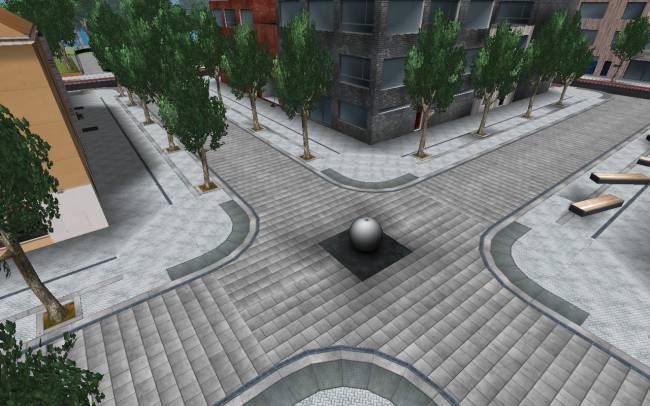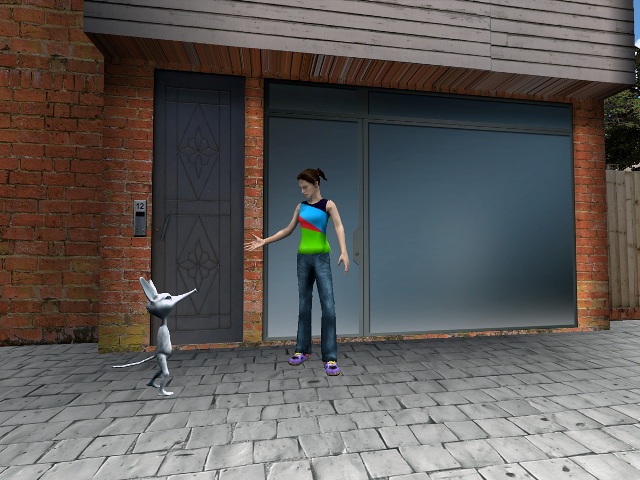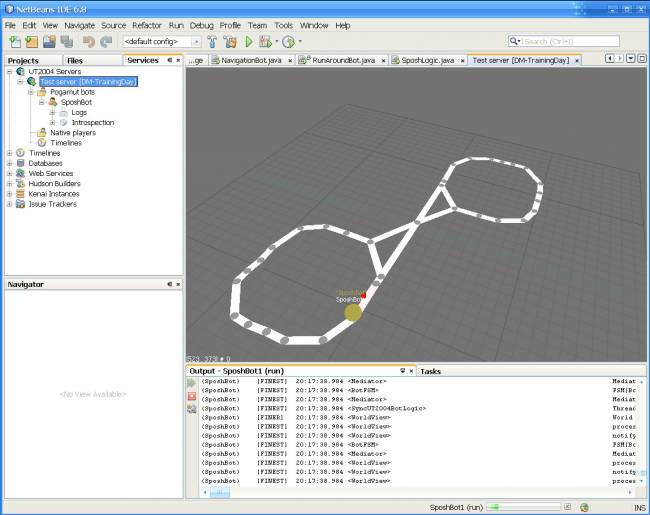This is an old revision of the document!
Pogamut brief introduction
Multiple game engines provide open scripting languages, which allow users to create scripted AI. External control mechanisms can be connected to many of these games using the scripting languages, thereby providing a tool to control the in-game characters from the outside. Pogamut utilizes UnrealScript (UT2004 scripting language) in this way and also NetBeans Java platform to provide an out-of-the box development environment for AI of virtual characters inhabiting UT2004 worlds. Pogamut’s features include:
- an integrated development environment (IDE) with debugging support,
- a library with sensory-motor primitives, path-finding algorithms and support for shooting behaviour and weapon handling, connection to a reactive planner (called POSH), which allows for controlling bots by behavioural trees (a graphical editor is included),
- a binding to an emotional module (called ALMA), enabling bots to have “emotions”,
- a module for defining interactive stories by the StorySpeak language that is based on the BDI model of human practical reasoning,
- example bots
More about the Pogamut platform can be found on its official homepage. If you want to install Pogamut and experiment with it in advance follow instructions on installation page.
Graphics
This graphical package will be used during the tutorial. A girl interacts with an emohawk, a magical pet. The second, angry emohawk stays in the background. (Copyright © 2009 Zbyněk Krulich. Textures we use are from Mayang's Free Textures Library))
—

Another picture showing EmohawkVille - a city used in UnrealEngine2 Runtime for Pogamut.
Pogamut architecture.
Pogamut 3 NetBeans plugin. On the left side you can see a server with a list of connected bots. On the right side you can see a visualization of navigation grid of the actual map.


